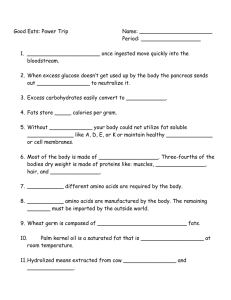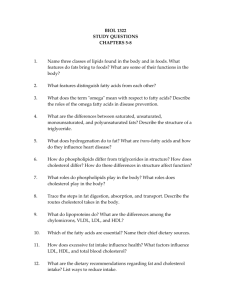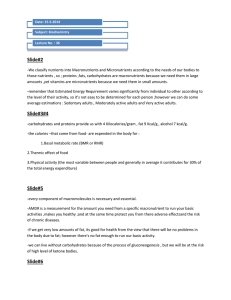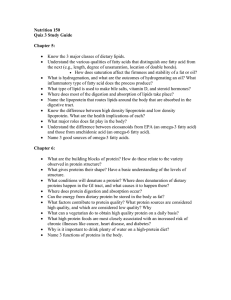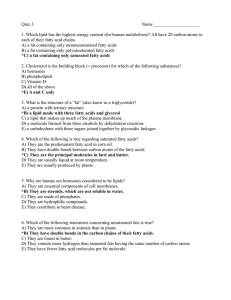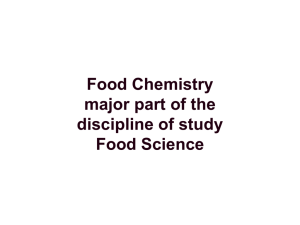Nutr 244 Exam 2 StudyGuide
advertisement
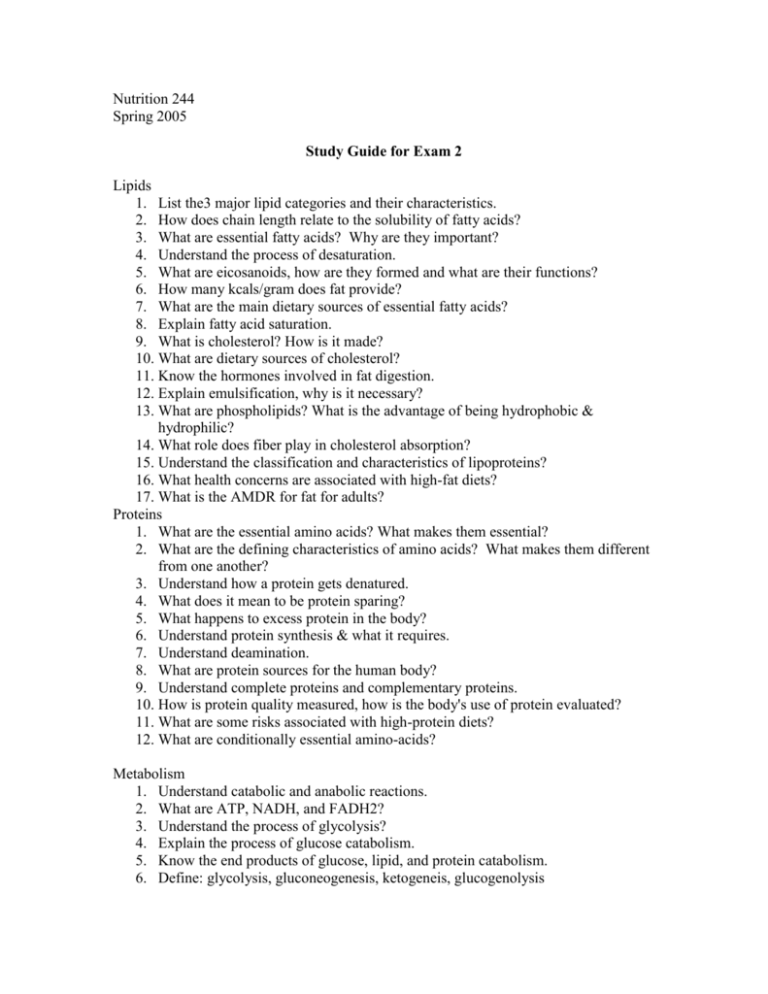
Nutrition 244 Spring 2005 Study Guide for Exam 2 Lipids 1. List the3 major lipid categories and their characteristics. 2. How does chain length relate to the solubility of fatty acids? 3. What are essential fatty acids? Why are they important? 4. Understand the process of desaturation. 5. What are eicosanoids, how are they formed and what are their functions? 6. How many kcals/gram does fat provide? 7. What are the main dietary sources of essential fatty acids? 8. Explain fatty acid saturation. 9. What is cholesterol? How is it made? 10. What are dietary sources of cholesterol? 11. Know the hormones involved in fat digestion. 12. Explain emulsification, why is it necessary? 13. What are phospholipids? What is the advantage of being hydrophobic & hydrophilic? 14. What role does fiber play in cholesterol absorption? 15. Understand the classification and characteristics of lipoproteins? 16. What health concerns are associated with high-fat diets? 17. What is the AMDR for fat for adults? Proteins 1. What are the essential amino acids? What makes them essential? 2. What are the defining characteristics of amino acids? What makes them different from one another? 3. Understand how a protein gets denatured. 4. What does it mean to be protein sparing? 5. What happens to excess protein in the body? 6. Understand protein synthesis & what it requires. 7. Understand deamination. 8. What are protein sources for the human body? 9. Understand complete proteins and complementary proteins. 10. How is protein quality measured, how is the body's use of protein evaluated? 11. What are some risks associated with high-protein diets? 12. What are conditionally essential amino-acids? Metabolism 1. Understand catabolic and anabolic reactions. 2. What are ATP, NADH, and FADH2? 3. Understand the process of glycolysis? 4. Explain the process of glucose catabolism. 5. Know the end products of glucose, lipid, and protein catabolism. 6. Define: glycolysis, gluconeogenesis, ketogeneis, glucogenolysis 7. Explain beta-oxidation. 8. Understand the phrase “fat burns in the flame of the carbohydrates.” 9. Understand the functions of the TCA cycle and the electron transport chain. 10. What is ketoacidosis? What are the dangers associated with this condition? 11. During starvation, how does the body utilize glucose? Energy Balance, Body Composition and Weight Management 1. Understand energy balance and what contributes to it. 2. Understand internal cues (hunger, satiation and satiety). 3. What is the difference between hunger and appetite? 4. Why do some foods promote overeating and some do not? Give examples. 5. Understand basal or resting energy expenditure. 6. What are the differences between direct and indirect calorimetry? What are the advantages of using one over the other? 7. What risk factors are associated with differences in fat distribution patterns? 8. Know the theories associated with weight regulation. 9. What is the mechanism that causes weight loss in a high-protein, low carbohydrate diet? 10. Review over the counter weight loss drugs and dietary supplements. 11. Why is being underweight a health risk? 12. What are the components of a sound weight-management program?

